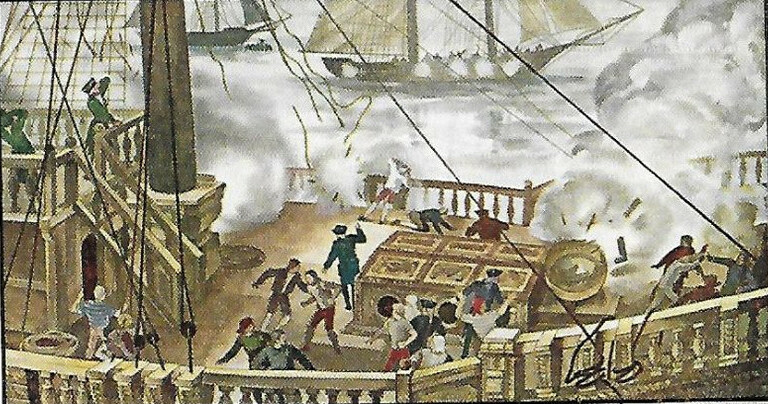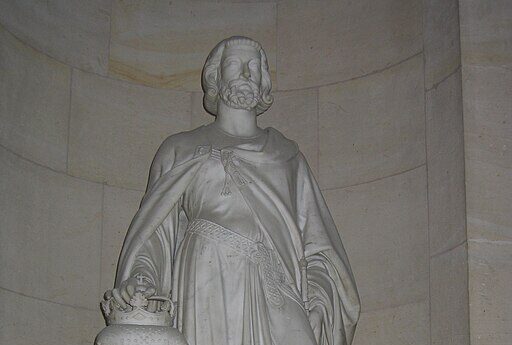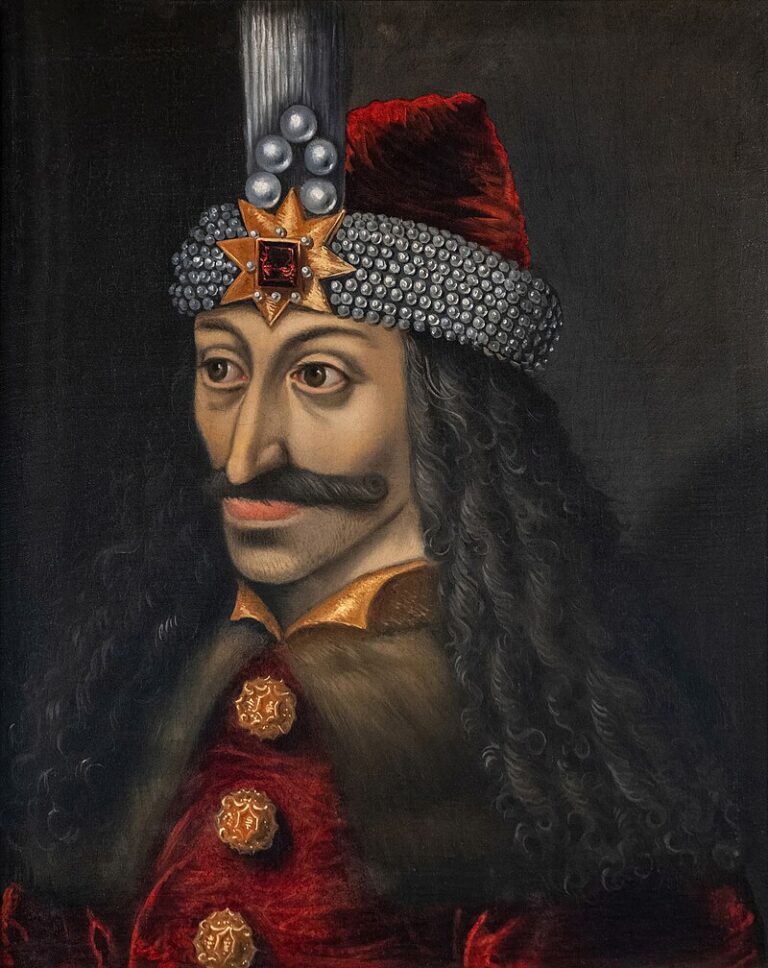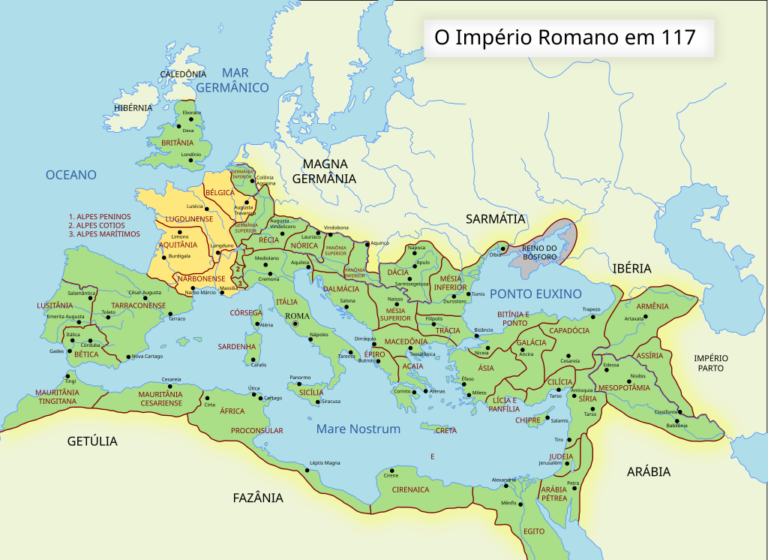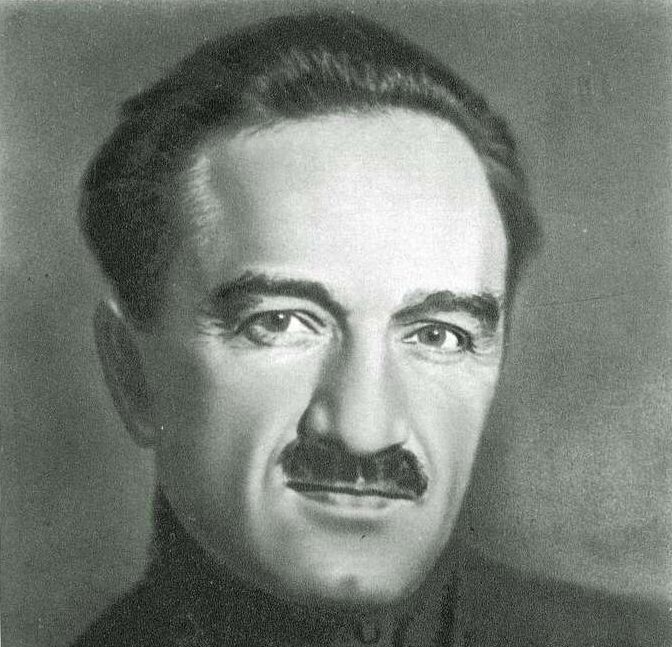
Originally published in: HISTORIA I ŚWIAT, nr 12 (2023), ISSN 2299-2464, e-ISSN 2956-6436
Author: Ondřej FIŠER, University of Geneva, Switzerland
Abstract: This article is a discourse on the main trendsetters of international economic cooperation in the Eastern Bloc in the period 1948-1953. Special emphasis is placed on the architects of cooperation between Czechoslovakia and the Soviet Union, since both countries established themselves as economic leaders after the Second World War and, moreover, developed a number of specific close links between their industries. The article focuses on the role of top officials of the Communist Party of the Soviet Union. In addition, the paper also explores the role of Soviet advisors who stewarded the economies of the other Eastern Bloc states, both from Moscow and as seconded delegates directly from the ministries and enterprises of the individual members of the Council for Mutual Economic Assistance.
Key words: History, USSR, Economy, Communist Party of the Soviet Union, Soviet advisors, Stalin
Introduction
An in-depth analysis of the system of international economic cooperation in the Eastern Bloc cannot be done without identifying and characterizing the central figures who set the wheels of socialist forms of trade and scientific-technical know- how sharing in motion. As many historians1 have agreed, the central role of trend- setters in the Eastern Bloc was played by a small handful of high-ranking members of the Communist Party of the Soviet Union (CPSU). However, there is much less con- sensus in the community of contemporary historians on the specific responsibilities and powers of the individual members of the Central Committee, Politburo and Secretariat of the CPSU.
Several historians such as Mark Kramer and Leslie Holmes have written on the key authority and role of the Soviet leaders during the period of 1948-1953 in faci- litating economic cooperation between the Eastern Bloc states. These authors argue that particularly Joseph Stalin and Vyacheslav Molotov wielded significant influence over the economic policies of the other socialist states. Kramer highlights the role of the Soviet Union in initiating and coordinating economic plans and providing scientific-technical assistance.2 On the other hand, there are historians such as Karel Kaplan who largely doubt the omnipotence of the CPSU General Secretary and other Politburo members and provide evidence of the hitherto marginalized importance of Soviet advisors, engineers, military specialists and other more technically inclined experts.3 The wide range of Soviet advisors were active both directly in the govern- ments of Soviet satellites and within the Bureau of the Council for Mutual Economic Assistance (CMEA).
The main aim of this article is therefore to clarify the specific roles and prerogatives of the individual Soviet actors and to provide an in-depth depiction of the undertakings of these actors using the example of Czechoslovak-Soviet cooperation.
Multifaceted Soviet Leadership
Dienstbier, Fallenbuchl, Dvořáček and other historians and economists point to the key influence of the CPSU on the direction of the political-economic development of CMEA members.4 This influence was based both on the natural authority of the So- viet leadership and on the setting of the Soviet economy within the Eastern Bloc.5 Czechoslovak, Polish, East German and other delegations often travelled to Moscow to discuss the transformation of their domestic economies along Soviet lines. The opi- nions of Soviet representatives formulated on these occasions were then taken as ‘binding directives’ and their vision was often irresponsibly and blindly adopted by the leadership of the national communist parties, even though it was not always applicable to local conditions.6
The most influential leaders of the CPSU were concentrated around the Politburo, the Presidium of the Supreme Soviet (Prezidium Verkhovnogo Soveta) and the Council of Ministers (Sovet Ministrov SSSR). At the top of the Soviet Party and government structure was Joseph Stalin, who held both the position of General Secretary of the CPSU (General’nyy sekretar’ TsK KPSS) and Chairman of the Council of Ministers (Predsedatel’ Soveta Ministrov Sovetskogo Soyuza).
Stalin had a major authoritarian influence not only on the direction of the USSR, but on the political and economic development of the entire Eastern Bloc. His interests focused mainly on general issues of security, geopolitics and macroeconomics, since his limited knowledge, time constraints and deteriorating health, especially in the second half of the Gottwald era (1951-1953), did not allow him to direct the more technical aspects of international cooperation. This area of Soviet foreign policy was thus delegated to other members of the Presidium, including Anastas Mikoyan, Vyacheslav Molotov and Maksim Saburov, and to a number of Soviet advisors who were active both in the CMEA and at various levels of the individual CMEA economies.7 The specific division of powers between Stalin, members of the Presidium, and Soviet advisors remains one of the main challenges of contemporary historiography, which is further complicated by the only gradual opening of previously classified archives.
Stalin’s proactive approach was especially evident in the process of estab- lishing the CMEA, during which he emerged as the main architect of its organization and scope of work. Stalin defined the political-economic goals of the Council in its founding meetings, where he spoke of the need to accommodate mutual trade demands, coordinate the approach to inter-bloc commerce, and create a system of scientific- technical cooperation.8 With this approach, he sought to strengthen the independence of the CMEA market from Western imports. At the same time, Stalin advocated increasing exports from the Socialist Bloc to capitalist countries in order to strengthen the communist image and reduce US influence. These findings indicate that the General Secretary of the CPSU gave the CMEA different goals than other national leaders. While Stalin approached the Council as a tool to advance his political-ideological interests, the leadership of the Communist Party of Czechoslovakia (CPC) regarded the organization as a way to boost Czechoslovak exports and gain access to Soviet mineral resources and know-how.
This divergence of vision is evidence of the CPC’s own approach to international economic policy. Furthermore, according to the ideas of Stalin, the USSR occupied a specific place in the CMEA that was distinct from the rest of the member states. From the beginning of the negotiations on the system of cooperation within the Council, Stalin, Mikoyan and Molotov argued that the decisions taken within the CMEA platform were not binding for the USSR. Although Stalin promoted radical views on intra-bloc economic coordination and integration, he kept his distance from these measures and sought to make them binding only for the other CMEA members.9
Another major influence on the further development of the individual CMEA economies had Stalin’s standpoints in the negotiation of intra-bloc bilateral long-term trade agreements. For instance, in this matter, the General Secretary of the CPSU pressed Rudolf Slánský and Alexej Čepička (Czechoslovak Minister of National De- fense, ministr národní obrany) to focus on the development of heavy industry and military technology. This was particularly evident in 1951, when a secret meeting of the CMEA defense ministers was held in Moscow, at which Stalin authoritatively decided on the development of Czechoslovak arms production and the far-reaching rearmament of Czechoslovak combat units.10 Despite the CPC’s urgings, the Soviet Vneshtorg refused to increase the supply of raw materials to enable the fulfillment of this task. Jaromír Dolanský therefore turned directly to Stalin as a last resort and the highest authority of the Soviet Union. After Stalin’s intervention, the Soviet Ministry of Foreign Trade increased the supply of metals and other materials.11 These findings clearly indicate that Stalin was able to moderate the seemingly intransigent standpoints of Soviet ministers and other high officials.
Stalin’s influence was also evident in the development of science, which he sought to transform into a political instrument. To this end, he encouraged research that validated his political doctrine, to the detriment of scientific objectivity. The Stalinist deformation of science can be represented, for example, by the ‘pseudoscientific’ work of Trofim Lysenko and Olga Lepeshinskaya, whose approach was then introduced in Poland, Czechoslovakia and other CMEA countries as part of the transformation of the socialist scientific-research base along the Soviet lines.12
As these above enumerated findings suggest, Stalin possessed a key ability to direct many aspects of the economic and scientific-technical development of individual CMEA members. However, his limited capacity forced him to delegate the manage- ment of some forms of international cooperation to other representatives of the CPSU nucleus.
Another key figure in the development of economic and scientific-technical cooperation between CMEA economies during the Gottwald era (1948-1953) was Anastas Mikoyan, who served as Soviet Minister of Foreign Trade and later as First Deputy Chairman of the Council of Ministers (Pervyy zamestitel’ Predsedatelya Soveta Ministrov). His role was to a limited extent addressed by Kaplan, who, however, did not provide a detailed insight into his activities in the CMEA Bureau and in managing the work of Soviet advisors.13 Mikoyan’s influence stemmed largely from his ability to direct the negotiations of long-term trade agreements and from his authority in shaping the model of the CMEA system of cooperation that guided the development of socialist economies for the next 40 years.14 He was, along with Stalin, one of the main promo- ters of economic self-sufficiency. During the negotiations of Czechoslovak-Soviet trade agreements, he refused to satisfy Czechoslovakia’s high demands for supplies and instead demanded that industrial ministries strengthen their autarky. Mikoyan did not accept the arguments of Czechoslovak officials about the lack of domestic mineral resources and the resulting need to maintain intensive commercial traffic.15 His intran- sigent standpoints forced the Zápotocký administration to pursue the development of domestic mining and processing industries at the expense of consumer, light and other traditional sectors.
Mikoyan’s opinions within the CMEA also led to an intensification of Czecho- slovak economic and scientific-technical assistance to less developed socialist states. In his view, Czechoslovakia could not think only in economic terms and refuse to pro- vide assistance for the lack of adequate compensation. At Mikoyan’s demand, the Cze- choslovak Ministry of Foreign Trade increased its shipments of supplies to the other CMEA states at the cost of having to provide long-term loans. Mikoyan also played an important role in directing the development of CMEA economies by organizing the deployment of Soviet ‘permanent experts/advisors’ to their enterprises, research institutes and governmental bodies.16 As a cursory analysis of the archives of the Cze- choslovak State Planning Office indicates, Mikoyan’s role may have been significantly more crucial than hitherto acknowledged. However, additional archival research would be needed to establish a more accurate portrayal of his influence.
A historiographical debate also exists around the specific role of the Soviet Minister of Foreign Affairs (Ministr inostrannykh del SSSR) Vyacheslav Molotov, who seemed to have a major impact on shaping the foreign policy of CMEA members especially before March 1949. At the beginning of the Gottwald era, Molotov, along with Mikoyan, Stalin, Malenkov, and other top CPSU officials, participated in forming the CMEA. He advocated for the ‘interested party principle’ in the voting of individual CMEA bodies, since he believed that each member state should have the right to influence the decisions of the Council if it believed that it was directly or indirectly affected by the negotiated issue. While Stalin and Malenkov often only participated in general ideological discussions, Molotov led debates on more technical issues of trade and international cooperation.17 His authority was clearly visible on these occasions as he mediated the discussions, evaluated the views of other parties, drew conclusions, and proposed the next program of work. Kaplan also demonstrates that Molotov had a major influence on shaping the system of intra-bloc trade, ‘multilateral clearance’ and East-West political relations. He was one of the main advocates of ‘duality’ within the CMEA, as his approach to international cooperation placed the USSR in a different position from the other member states. The aim of his policy was to create a system in which the other members would meet their economic needs among themselves and would only call for intervention by the Soviet Union in cases of extreme necessity.18
The standpoints of Molotov were also decisive for the development of inter- national trade. Since the choice of market partners was highly politicized, it was com- mon for the Soviet Minister of Foreign Affairs to intervene. For example, on the basis of Molotov’s negative attitudes towards trade with Yugoslavia, Czechoslovak FTEs were forced to suspend their export of already completed machine orders, which led to millions of dollars in losses.19 On the other hand, his more open approach to trade with Bizonia (Bizone) at the beginning of the Gottwald era allowed Czechoslovakia and East Germany to maintain certain imports of Western technology. Molotov also parti- cipated in the negotiation of long-term intra-bloc trade agreements. Within these, he was an active advocate of coordinating the production of both basic raw materials and value-added products, including machinery.20 The rich sources of the Cze- choslovak and Soviet archives on the role of Molotov became significantly ‘quieter’ with the onset of the 1950s. This may be due to his diminished influence after March 1949, when he fell out of favor with Stalin and was replaced as foreign minister by Andrei Vishinsky.
A similar fate befell Anastas Mikoyan, who was dismissed from the post of Minister of Foreign Trade in March 1949 and replaced by Mikhail Menshikov.21 The new Vneshtorg leader became a key figure in the negotiation of the Czechoslovak
-Soviet trade agreement in 1950, which determined the development course of the Czechoslovak economy for the following five years. Menshikov also negotiated with the Czechoslovak Minister of Heavy Industry, Augustin Kliment, for key Soviet supplies of raw materials and machinery necessary to fulfill the exorbitant Czechoslo- vak plan. However, Menshikov was intransigent in some of his standpoints and refused to meet all of Kliment’s demands. His positions then forced Czechoslovak negotiators to seek alternative suppliers in the West and to invest heavily in the development of domestic production.22
Since the second half of 1952, a reshuffling of the reins of power within the top Soviet leadership can be observed. In the last months and days of Stalin’s life, when the increasingly paranoid General Secretary of the CPSU was bedridden, Beria, Molotov, Malenkov and Khrushchev took the helm of Soviet foreign economic policy through devious plotting. However, as Joshua Rubenstein’s book The Last Days of Stalin and documents from the Wilson Center Digital Archive suggest, the specific pattern of power structures within the USSR at the start of 1953 remains obscure.23 Not only did the ‘Ruling Troika’ of Malenkov, Molotov and Beria interfere in the foreign economic policy at the time, but also, with the retreat of Stalin, the previously ousted Anastas Mikoyan, Maksim Saburov, and other Soviet communists enjoyed the ability to influence the foreign trade and production plans of the entire Eastern Bloc.
Soviet Advisors: An Extended Arm of the Moscow Clique
The Czech Security Services Archive (Archiv bezpečnostních složek) supplemented by findings from Kaplan, Kabele, and Šír indicate that in addition to the top representatives of the CPSU, permanent Soviet advisors were among the main guiding forces in the development of CMEA economies and their system of interna- tional cooperation.24 However, it needs to be acknowledged that despite the existence of the limited above listed research, the role of Soviet advisors remains a strongly underresearched area of Eastern Bloc historiography and therefore lacks a precise definition of its key terms.25 In this regard, a comparative analysis of different Czechoslovak and Soviet archives shows that it is necessary to distinguish in particular between ‘permanent advisors’ and those who came for specific days or maximum weeks-long projects. The mission of the permanent advisors was of a long-term and more general nature and their tasks were aimed at large-scale rebuilding of the state and economic apparatus of CMEA members according to the Soviet model. In Czecho- slovakia, they strove to facilitate the development of heavy industry, accelerate militarization and uranium mining, and strengthen Stalin’s control over the political- economic infrastructure of the country.26 These advisors worked both within the econo- mies of the Soviet satellites and in the CMEA Bureau.
The first wave of permanent advisors arrived in Czechoslovakia in 1949 and consisted of experts from the military and security sector.27 Their presence was requested by the top CPC officials, who sought to expose the traitors of the communist regime similar to the case of Laszlo Rajk in Hungary.28 The authority of these advisors is evidenced by the fact that both Gottwald and Slánský personally received them and endowed them with broad powers allowing them to construct political processes and replace capable but non-conforming officials with new cadres who were more committed to the policies of Moscow.29 They also had a major influence on the recon- struction of the Czechoslovak state apparatus, as they organized the establishment of the Ministry of National Security (Ministerstvo národní bezpečnosti).30 The analyses of Kaplan indicate that the permanent advisors later also directed the day-to-day operations of this new department, since its head, Ladislav Kopřiva, was instructed by Gottwald to follow their views.31 The activities of security advisors led to a wave of arrests that involved dozens of high-ranking state and Party officials.32
In addition to the influence of the permanent advisors on the reorganization of the state apparatus and the staffing of CMEA members, these experts also played an important role in the development of socialist economies. In early 1950, the Cze- choslovak and Soviet governments signed an agreement on the assignment of Soviet advisors to economic sectors. As a result, a new wave of technical advisors whose main task was to ensure the transformation of Czechoslovak industrial ministries according to the vision of the CPSU, began to arrive from the mid-1950 onwards.33 These ‘consultants’ were active mainly in the sectors of mining, metallurgy, energy, electrical and mechanical engineering, textiles, chemistry and car manufacturing. In addition, a special group of Soviet advisors had been working in the Jáchymov mining area where they played a key role in the development of the Czechoslovak uranium industry.34 A comparative analysis indicates that the organization and working methods of Soviet economic advisors differed significantly from those active in the se- curity and military sectors. While the latter ones were among themselves forming a centralized and hierarchical apparatus, the economic advisors were scattered throughout the various levels of government and enterprises and operated more autonomously.35 Their influence on the development of the Czechoslovak economy was nevertheless crucial, as they were responsible for introducing the Soviet model of standardization, management, planning, production organization and foreign trade.
The goal of Soviet economic advisors was also to facilitate the transformation of the Czechoslovak economy towards heavy and arms industry. To this end, the out- dated, ‘capitalist-infested’ general directorates (generální ředitelství) were replaced by main administrations (hlavní správy), and a key Ministry of General Engineering (Ministerstvo všeobecného strojírenství) was established in 1951 to manage, in parti- cular, the implementation of the Czechoslovak plan in the arms industry. At the same time, the Ministries of Fuel and Energy (paliv a energetiky), Heavy Engineering (těžkého strojírenství), Metallurgical Industry and Ore Mines (hutního průmyslu a rudných dolů), and Chemical Industry (chemického průmyslu) were also established on the instructions of advisors.36
In addition to the Soviet consultants, who focused on more general organi- zational issues of the economic reconstruction, there were also experts responsible for the more technical measures related to the implementation of this transformation. The- se ‘technical advisors’ participated in the elaboration of technical development plans (plány technického rozvoje) and helped to modernize the working methods and equipment of individual CMEA enterprises/sectors, as in the case of the reconstruction of the Ostrava-Karviná Mining District (Ostravsko-karvinský důlní revír).37 In this regard, they were an important component in shaping Czechoslovak-Soviet scientific-technical cooperation. Another group of technical advisors was determinant for the formation of the Czechoslovak arms production. Since the requirements set by Stalin for the Czechoslovak arms industry far exceeded the capacity of the economy, CPC Stalinists such as Karol Bacílek demanded the dispatch of Soviet milita- ry/technical advisors to rebuild the factories of Czechoslovak arms producers in the autumn of 1952. Their recommendations led to the modification of the mana- gement of arms enterprises and to the strengthening of Soviet assistance in the produc- tion of tanks, aircraft, machine guns and other military technology.38
While the Soviet advisors working in the field of general restructuring of the Czechoslovak economy ceased their activities at the end of 1951, the technical advisors remained active in Czechoslovak industry until 1953. According to Kaplan, among the main goals of these advisors was to ensure the long-term implementation of the Czechoslovak economic plan. Most were active within the Ministry of General Engineering, but other sectors including agriculture, metallurgy and mining also main- tained a significant number of them.39 Technical advisors that remained in Czechoslo- vakia worked both in bodies of the central government and directly in the corporate sphere, where they helped to introduce Soviet technologies, management and production methods.
The question for further research is to what extent the measures proposed by the Soviet advisors were based on their own vision and to what degree were they the result of mutual consultations with CMEA partners. Certain insight in this regard was provided by Kabele, who indicated that the Soviet proposals for the far-reaching economic reorganization were discussed within special commissions composed of both domestic delegates and dispatched Soviet advisors. However, it was the Soviet advisors who had the key decisive power in these bodies. Other members of the commissions often acted as their secretaries and were only responsible for procu- ring the requested information. Protests against the authoritarian approach of the Soviet advisors were common.40
According to Kaplan, the authoritative/authoritarian position of the advisors was also visible in relation to the CPC leadership itself. Even Gottwald required their opinion on every major measure. A similar practice was later adopted by all industrial ministers, since following the recommendations of advisors in a period of show trials ensured protection of the contestability of decisions and hence against charges of sabotage. This was a common practice, especially towards the end of the Gottwald era, when the ‘Slánský trial’ was launched. Soviet advisors were aware of their unbridled authority and ceased to consult with the Czechoslovak representatives on their recommendations.41 However, it seems that this practice was not the rule in the Gottwald era. According to the archives of the Czechoslovak Ministry of Fuels and Energy from 1952, Soviet advisors at times complained that although the main administrations accepted their views, Czechoslovak enterprises and individual employees often did not follow them.42
As Kaplan and Radisch indicate, during the Gottwald era, Soviet advisors also had a major influence on the development of the Czechoslovak economy through the CMEA.43 In this case, their authority originated from their control of the executive body of the Council, the so-called ‘Bureau’. They were headed by Anastas Mikoyan, a member of the Politburo of the CPSU and Minister of Foreign Trade, which further strengthened their decision-making powers and made their recommendations unofficially binding.44 Within the Bureau, around two Soviet advisors were assigned to the Czechoslovak delegation on a permanent basis. Their task was to draw up proposals for the coordination of production and foreign trade and to develop investment and economic restructuring plans.45
CMEA advisors in the Moscow Bureau seemed to have a greater authority than the economic advisors in individual member states. This is evident in the approach of the Czechoslovak permanent delegate to the Council, Húsek, who often accepted their recommendations without protest and forwarded them directly to Prague, where the Economic Council of the Central Committee considered them ‘binding instruc- tions’ to be implemented and instructed the State Planning Office to incorporate them to the Czechoslovak economic plan. These interventions were sometimes so substantial that they changed the original plan beyond recognition.46 Since these revised plans often exceeded the production capacity of the Czechoslovak economy, it was necessary to initiate projects of economic and scientific-technical cooperation to ensure their fulfillment.
New findings from the archives of the Czechoslovak Works of Precision Engi- neering show that the work of Soviet advisors had a number of negative effects that have been largely overlooked in previous historical studies. The substantiality of the negative influence was particularly observable at the beginning of the 1950s, as the activities of advisors led to the Sovietization and radical militarization of the Czechoslovak heavy industry. The tasks assigned by the consultants placed an overwhelming burden on Czechoslovak enterprises and led to disequilibria and stagnation in the standard of living. The ineffective economic system introduced by the Soviet advisors then remained in its rough outlines in place until the final de-Stalinization of Czechoslovakia in the early 1960s.
Moreover, the presence of advisors in Czechoslovakia placed a significant financial burden on the already overstretched economy. The Czechoslovak government paid them above-average salaries and provided them with the most luxurious apartments, personal drivers and other benefits that, according to Kaplan, cost the Czechoslovak economy around 53 million Czechoslovak crowns (CSK) during the Gottwald era.47 Besides, archives of the Ministry of Heavy Industry indicate that the enforced reorganization of Czechoslovak industrial ministries in 1950-1951 slowed down the implementation of scientific-technical cooperation projects, since the newly established departments and main administrations were unable to effectively take over the activities initiated by their predecessors.48 A related issue concerned individual experts who had to change workplace as part of the transformations and who were not allowed to travel abroad under the new affiliation for the implementation of projects even though they previously passed cadre vetting.49
The problems caused by the Soviet advisors aggravated the sentiment of other CMEA experts towards their activities. This was reflected in the increased reluctance of Czechoslovak, Polish, East German and other enterprises to put Soviet recom- mendations into practice. In such cases, CPSU leadership often disagreed with further deployments of advisors to sectors where previous expertise had not been sufficiently utilized.50
In addition, the Soviet side also began to complain about the non-compliance of individual CMEA economies with agreements on the work of Soviet advisors. According to a protocol from 1952, the Soviet experts on seismology and radio engineering dispatched to Czechoslovakia were to work in predetermined groups and solve predefined tasks. However, the Czechoslovak Ministry of Fuels and Energy reassigned these advisors to other groups and gave them only a consultative status. Moreover, complaints from Soviet experts show that their recommendations were often not applied in the end.51 The reluctance of Czechoslovak enterprises to blindly adopt Soviet recommendations points to the diverging visions of both sides on the optimal set-up of the Czechoslovak economy and the persistent split between the practical eco- nomic needs on the one hand and the ‘ideological-political allegiance’ to Soviet leadership on the other. This case also demonstrates the Czechoslovak ability to refrain from following the Soviet viewpoint literally and to assert its own national interests.
Conclusions
This paper provided an insight into the system of international economic cooperation between CMEA countries. Research in the Soviet and Czechoslovak archives, supplemented by secondary sources, made it possible to identify a small circle of CPSU cadres who had a vital influence on the formation of economic ties between the Eastern Bloc states in 1948-1952. In the first place, the Czechoslovak archives have supported the view of Mark Kramer, who often stresses the central role of Stalin. The significant influence of the General Secretary of the CPSU was already evident in the process of the very formation of the CMEA, during which Stalin emerged as the main architect of its organization and scope of work. The Czech National Archive and the Archives of the Czech Ministry of Foreign Affairs have also pointed to Stalin’s key role in negotiating long-term trade agreements between CMEA countries. Moreover, on a general ideological level, Stalin was also a decisive force in shaping the intra-bloc system of scientific-technical cooperation through his influence on the strengthening of pseudo-scientific studies and the principle of royalty- free provision of know-how.
In addition to Stalin, other members of the Politburo, the Presidium of the Supreme Soviet and the Council of Ministers emerged as central figures in shaping intra-bloc economic cooperation in the period 1948-1953. Stalin had limited knowled- ge and, especially in the early 1950s, failing health, and so he receded significantly into the background towards the end of his era. The technical aspects of intra-bloc coopera- tion were thus delegated to Anastas Mikoyan, Vyacheslav Molotov, Maksim Saburov and other members of the Presidium. Mikoyan, in particular, had developed into an absolutely key, though not yet fully recognized, figure of intra-bloc cooperation. His importance stemmed from his responsibility to direct the work of Soviet advisors and from his ability to guide the negotiations of long-term trade agreements. In addition to Mikoyan, his successors as Minister of Foreign Trade, Mikhail Menshikov and Andrei Vishinsky, also proved crucial in directing intra-bloc economic cooperation.
The archives of Czechoslovak industrial ministries, supported by Karel Kaplan’s research, further revealed the crucial and hitherto largely unrecognized role of Soviet advisors. The initially timid and unsystematic visits of Soviet experts to the military and security sectors evolved over the course of 1950 into a deeply organized system of management and control of most of the branches of individual CMEA economies. Soviet advisors played a key role in the reorganization of the Czechoslovak state apparatus and its personnel composition and in the trans- formation of the Czechoslovak economy towards heavy and arms industry. Specific sectors where the assistance of Soviet experts between 1950 and 1953 made a notable
impact were the mining industry, electricity generation and the production of military equipment. The last group of Soviets that strongly influenced the development of intra- bloc economic cooperation were the experts active in the CMEA Bureau who acted fairly independently and whose recommendations were seen as binding rulings by the national delegates to the CMEA. The rebalancing of the authority and influence of these Soviet officials came only with the death of Stalin and the termination of the show trials, which made it possible to strengthen the ability of the representatives of the other CMEA economies to adopt more assertive stances.
Footnotes:
* Corresponding Author. ORCID ID: https://orcid.org/0009-0007-6897-7706. fiserondrej1@gmail.com
1 Fallenbuchl, 1968; Kaplan, 2002; Rajak, 2011.
2 Kramer, 2014.
3 Kaplan, 1993.
4 Dienstbier, 1962; Fallenbuchl, 1968; Dvořáček, 1982.
5 Kaplan, 2002; see also NAČR, F. AN, 07/16, a.j. 3G, 106C, 107, k. 39.
6 Matishov, 2007; Hermann & Olšáková, 2013; Trebichavský & Šíma, 2019.
7 NAČR, P. 1102, F. 948, inv. č. 71, k. 26; see also Kaplan, 1993; Zenʹkovich, 2002: 508-12.
8 Kaplan, 1995: 232-4.
9 Kaplan, 1995: 232.
10 Wilson Center Digital Archive, Stalin’s Conference with East European Delegates, January 9, 1951; see also Cristescu, 1995.
11 NAČR, F. VM SÚP, a.j. 1089, šifra z Prahy 26.9.1950 Gregorovi, F. 100/1, f. 68, a.j. 536, F. 100/24,
f. 72, a.j. 998.
12 Sojfer & Paleček, 2005.
13 Kaplan, 1993; 1995: 119-21.
14 Mikoyan, 1999.
15 NAČR, F. 100/24, f. 72, a.j.998; Kaplan, 1995: 323-6.
16 NAČR, F. 100/24, f. 72, a.j. 998; Kaplan, 1995: 323-6, 361.
17 Thomas, 1976.
18 Kaplan, 1995: 232-3.
19 Pelikán, 2002; Rajak, 2011.
20 NAČR, archiv ÚV KSČ, tajný fond Slánský, záznam o ustavující schůzi RVHP, 8.1.1949.
21 Brown, 2009: 231.
22 Kaplan, 1995: 89-95.
23 Rubenstein, 2016.
24 ABS, F. A 2/1, a.j. 1611; Kaplan, 1993; Kabele, 2005; Pernes, 2008; Šír, 2020.
25 Caiola, 1962.
26 RGANI, f. 5, op. 28, d. 187, ll. 75–172, Otchet o rabote sovetskikh spetsialistov-sovetnikov v Kitaiskoi Narodnoi Respublike za I kvartal 1954 goda, 8 July 1954; Kalous, 2002.
27 Šír, 2020: 6, 22.
28 Kaplan, 1989: 288-9.
29 Kaplan, 1992: 67-8.
30 Kaplan, 1993: 23.
31 Kaplan, 1992: 164.
32 Svoboda, 1992: 12-3.
33 ABS, F. A 2/1, a.j. 1611, Změny ve směrnicích pro úpravu pobytových a stravovacích podmínek sovětských odborníků v ČSR, 10. 7. 1952; see also Kaplan, 1993.
34 Kaplan & Pacl, 1993: 50-7; Jančík, 2007: 196.
35 Šír, 2020: 53.
36 Vládní nařízení, kterým se zřizují nová ministerstva, Government Decree no. 74/1951 Sb.
37 NAČR, P. 1204, F. 953, inv. č. 28, sign. 056.2, k. 26, Porada s. Fadějeva se s. ministrem Pokorným dne
26. března, 1952; Bílek, Láník & Šach, 2006: 101, 141, 159, 172.
38 Bílek, Láník & Šach, 2006: 101, 141, 159, 172; see also Bílek & Procházka, 1989: 314-5; ABS, F. A 2/1
a.j. 401, Návrh na získání 2 sovětských poradců pro Technický odbor HS -StB pro PS ÚV KSČ, Postoupení návrhu Kanceláři předsedy KSČ, k rukám s. Hradce, a.j. KM-30114 K/52, 26.9.1952, KM- 30130 K/52, 10.10.1952; Kaplan & Pacl, 1993: 50-7.
39 Kaplan, 1993.
40 Kabele, 2005: 126; Pernes, 2008: 43-4.
41 Kaplan, 1993: 42-3.
42 NAČR, P. 1204, F. 953, inv. č. 28, sign. 056.2, k. 29, Záznam o jednání na Ministerstvu naftového
průmyslu, 15.9.1952.
43 Kaplan, 1995; Radisch, 2021.
44 NAČR, F. VM SÚP, a.j. 2814, Húskův dopis SÚP, 26.4.1951; Kaplan, 1979.
45 Kaplan, 1995: 47-8.
46 Kaplan, 1993.
47 NAČR, P. 1204, F. 953, inv. č. 27, sign. 056.1, k. 21; Kaplan, 1993: 9-42.
48 NAČR, P. 835, F. 936, inv. č. 50, k. 9.
49 NAČR, P. 1102, F. 948, inv. č. 71, k. 26.
50 NAČR, P. 1102, F. 948, inv. č. 71, k. 26., záznam z porady se sovětskými experty o výstavbě Ostravska, 2.4.1952, Poznámky s. Fadějeva na práci kombinátu SHR Most.
51 NAČR, P. 1204, F. 953, inv. č. 28, sign. 056.2, k. 29, Záznam o jednání na Ministerstvu naftového
průmyslu, 15.9.1952.
Bibliography Archival sources
ABS – Archiv bezpečnostních složek [Security Services Archive]
F. A 2/1, a.j. 401.
F. A 2/1, a.j. 1611.
F. A 2/1, a.j. KM-30114 K/52, 26. 9. 1952, KM-30130 K/52.
NAČR – Národní Archiv České Republiky [Czech National Archives], pomůcka (P.) [finding aid], fond (F.), folder (f.), inventární č. (inv. č.) [inventory no.], archivní jednotka (a.j.) [archival unit], karton (k.)
F. 100/1, f. 68, a.j. 536,
F. 100/24, f. 72, a.j. 998.
F. 100/24, f. 72, a.j.998.
F. AN, 07/16, a.j. 3G, 106C, 107.
F. VM SÚP, a.j. 1089.
F. VM SÚP, a.j. 2814.
P. 1102, F. 948, inv. č. 71.
P. 1204, F. 953, inv. č. 27.
P. 1204, F. 953, inv. č. 28.
P. 835, F. 936, inv. č. 50.
ÚV KSČ. Ústřední výbor Komunistické strany Československa [Central Committee of Communist Party of Czechoslovakia], tajný fond Slánský.
RGANI – Rossiiskii gosudarstvennyi arkhiv noveishei istorii [Russian State Archive of Contemporary History] f. 5, op. 28, d. 187, ll. 75–172, Otchet o rabote sovetskikh spetsialistov-sovetnikov v Kitaiskoi Narodnoi Respublike za I kvartal 1954 goda, 8 July 1954.
Vládní nařízení, kterým se zřizují nová ministerstva, Government Decree no. 74/1951 Sb
[https://www.zakonyprolidi.cz/cs/1951-74; accessed August 6, 2022]
Wilson Center Digital Archive, Stalin’s Conference with East European Delegates, January 9, 1951.
Literature
Bílek, J., Láník, J., Šach, J. (2006). Československá armáda v prvním poválečném desetiletí. Prague:
Mininsterstvo obrany České republiky.
Bílek, J., Procházka, Z. (1989). Vojenské dějiny Československa. V díl. Od roku 1945 do roku 1955. Prague: Naše vojsko.
Brown, A. (2009). The Rise & Fall of Communism. London: Bodley Head.
Caiola, M. (1963). Balance of Payments of the U.S.S.R., 1959-60. Staff Papers (International Monetary Fund), 10(2), 321–44. https://doi.org/10.2307/3866145
Cristescu, C. (1995).Strict Secret de importanţă deosebită – Ianuarie 1951: Stalin decide înarmarea Romăniei. Magazin istoric, 29(10), 15–23.
Dienstbier, J. (1962). Československo-sovětská spolupráce v hospodářství, vědě a kultuře. Prague: Svět sovětů.
Dvořáček, J. (1982). Přátelství na věčné časy. II. Z činnosti organizací přátelství k SSSR v Československu
v letech 1945-1977. Prague: Lidové nakladatelství.
Fallenbuchl, Z.M. (1968). The Role of International Trade in the Czechoslovak Economy. Canadian Slavonic Papers, 10(4), 451–78. http://www.jstor.org/stable/40866187
Hermann, T., Olšáková, D. (2013). Plánování socialistické vědy: Dokumenty z roku 1960 ke stavu a rozvoji přírodních a technických věd v Československu. Červený Kostelec: Pavel Mervart.
Jančík, D. (2007). Vývoz československého uranu do Sovětského svazu v letech 1946-1959. Acta Oeconomia Pragensia, 15(7), 194–208.
Kabele, J. (2005). Z kapitalismu do socialismu a zpět. Prague: Karolinum.
Kalous, J. (2002). Činnost sovětských poradců v komunistickém Československu [https://wwwold.nkp.cz/ seminar/cinnost_poradcu.htm; accessed August 1, 2022].
Kaplan, K. (1979). The Council for Mutual Economic Aid, 1949-1951: Excerpts of documents with commentary. (Research Project The Experiences of the Prague Spring 1968).
Kaplan, K. (1989). Mocní a bezmocní. Toronto: Sixty-Eight Publishers.
Kaplan, K. (1992). Zpráva o zavraždění generálního tajemníka. Prague: Mladá Fronta. Kaplan, K. (1993). Sovětští poradci v Československu 1949-1956. Prague: ÚSD AV ČR. Kaplan, K. (1995). Československo v RVHP 1949-1956. Prague: ÚSD AV ČR.
Kaplan, K. (2002). Rada vzájemné hospodářské pomoci a Československo 1957-1967. Prague: Karolinum. Kaplan, K., Pacl, V. (1993). Tajný prostor Jáchymov. České Budějovice: ACTYS.
Kramer, M. (2014). Stalin, Soviet Policy, and the Establishment of a Communist Bloc in Eastern Europe, 1941-1948. In T. Snyder, R. Brandon (Eds.), Stalin and Europe: Imitation and Domination, 1928-1953 (pp. 264–94). Oxford: Oxford University Press.
Matishov, G. G. (2007). Idei YU. A. Zhdanova v zhizni Yuzhnogo nauchnogo tsentra RAN [Ideas of Yu.
A. Zhdanov in the life of the Southern Scientific Center of the RAS]. Nauchnaya myslʹ Kavkaza, 4, 3–7. Mikoyan, S.A. (1999). Stepan Anastasovich Mikoyan: An Autobiography. Shrewsbury: Airlife Publishing. Pelikán, J. (2002). Jugoslávie a východní blok 1953-1958. Prague: Karolinum.
Pernes, J. (2008). Krize komunistického režimu v Československu v 50. letech 20. století. Brno: Centrum pro studium demokracie a kultury.
Radisch, E. (2021). Center and Periphery in the CMEA [www.hsozkult.de/conferencereport/id/ tagungsberichte-8856; accessed August 6, 2022].
Rajak, S. (2011). Yugoslavia and the Soviet Union in the Early Cold War. Oxford: Routledge.
Šír, M. (2020). Působení sovětských poradců v Československu. Master’s Thesis, University of West
Bohemia, Pilsen.
Rubenstein, J. (2016). The Last Days of Stalin. New Haven: Yale University Press. Sojfer, V.N., Paleček, P. (2005). Rudá biologie: pseudověda v SSSR. Brno: Stilus. Svoboda, L. (1992). Cestami života II. Prague: Prospektum.
Thomas, C. (1976). The Comecon: catalyst for economic cooperation in Eastern Europe. The Comparative and International Law Journal of Southern Africa, 9(3), 315–35. http://www.jstor.org/stable/23905548 Trebichavský, I., Šíma, P. (2019). Lysenkismus v Čechách. Živa 1, 7–9.
Zenʹkovich, N.A. (2002). Samyye zakrytyye lyudi: Entsiklopediya biografiy [The most closed people: Encyclopedia of biographies]. Moscow: Olma-Press. (in Russian)
To cite this article: Fišer, O. (2023). Soviet Coordinators of International Economic Cooperation in the Eastern Bloc in the Period 1948-1953. Historia i Świat, 12, 301–314. https://doi.org/10.34739/his.2023.12.18
Similar articles:
Inter-Bloc Organizations in the Late Stalin Era: More Than Platforms for East-West Feuds

